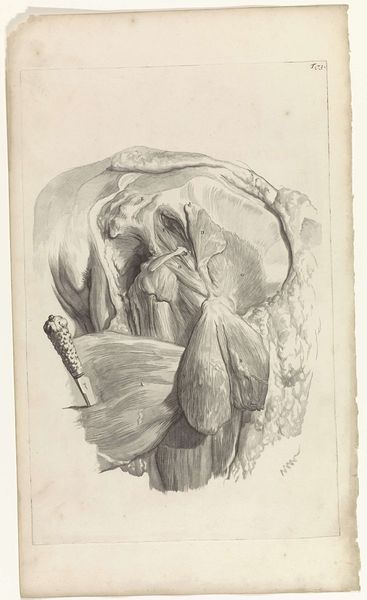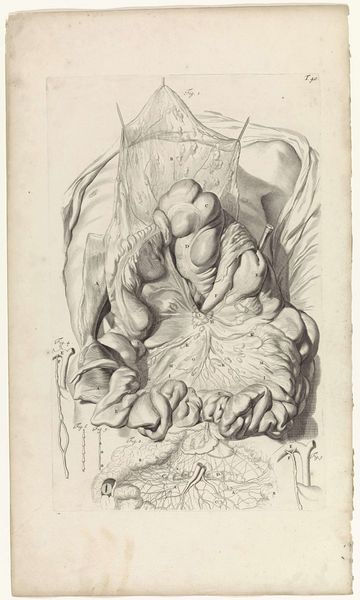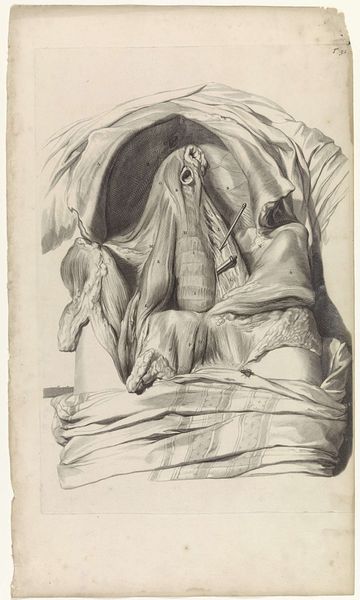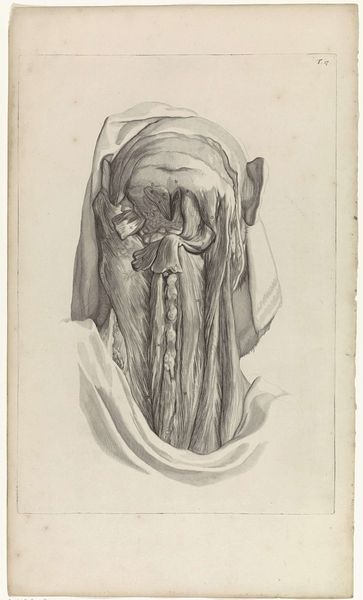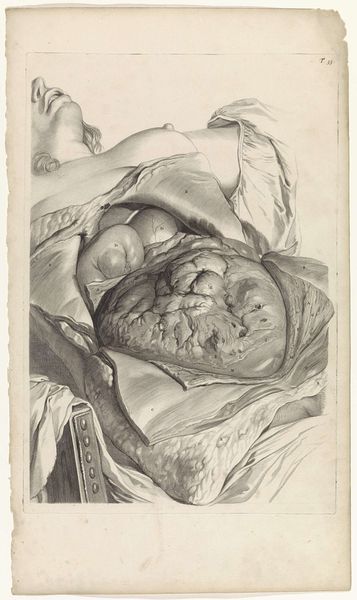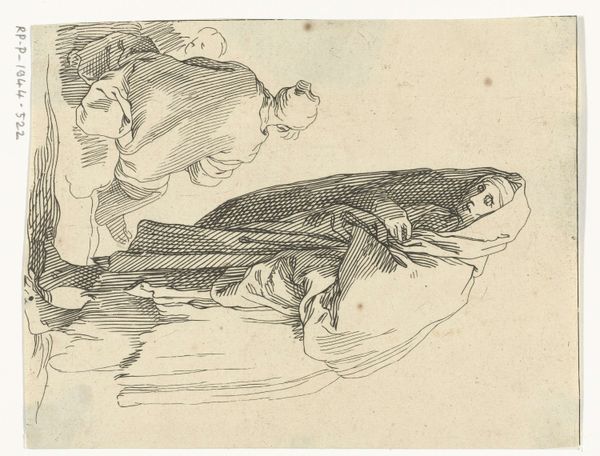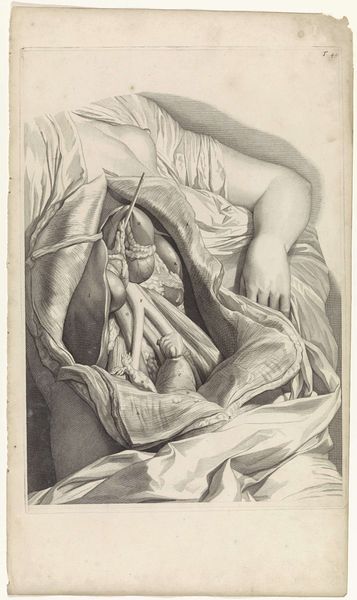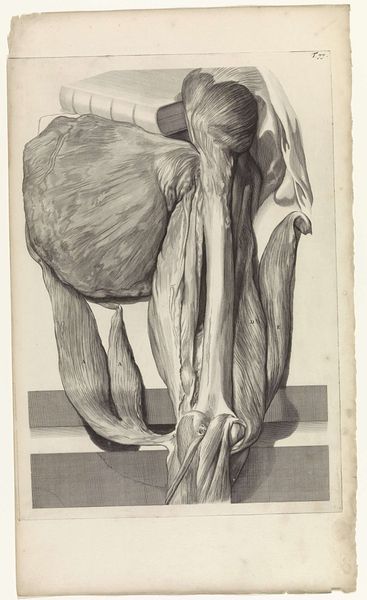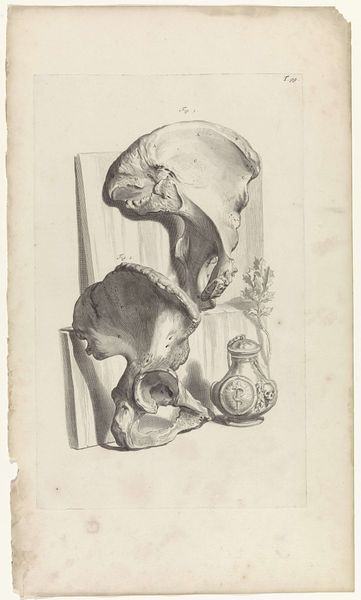
drawing, paper, engraving
#
drawing
#
baroque
#
paper
#
history-painting
#
nude
#
engraving
Dimensions: width 276 mm, height 440 mm
Copyright: Rijks Museum: Open Domain
Curator: This detailed engraving is entitled "Anatomische studie van de ingewanden van een man," or, in English, "Anatomical Study of the Intestines of a Man," created by Pieter van Gunst around 1685. It is held at the Rijksmuseum. Editor: Well, my initial reaction is a kind of detached curiosity mixed with revulsion. The meticulous detail gives it a scientific air, but the subject matter... the sheer abundance of intestines spilling out... it's unnerving. There’s a strange beauty to the almost pearl-like quality, juxtaposed with its intrinsic grossness. Curator: The pearl-like appearance you observe is a fascinating aspect. It speaks to a deeper historical context of anatomical illustration. The depiction isn’t merely clinical; it flirts with ideas about life and death, and the perceived obscenity of inner body made visible for us to consider. Editor: I see your point. It's baroque in style, so the dramatic flair is to be expected, right? But what's interesting is the treatment of light. There’s a spotlight effect that directs your eye to the very center of the anatomical display. This focus forces you to really grapple with its complex and somewhat alien landscape. Is it an attempt at glorification through illumination? Curator: Possibly. This image is tied to evolving scientific understanding, sure, but beyond that, the symbolism evokes deeper cultural reactions and meanings regarding man's vulnerability in a moment when empirical explorations and knowledge was changing man's perceptions of the divine and mortal world. The positioning of the body and the almost casual reveal hints at a transition to secular understandings of what was once sacred. Editor: Absolutely. I wonder if viewers at the time were equally repulsed and intrigued, or whether their cultural lens would have shaped their perception differently? Curator: Doubtless, context played a role then as it does now. The piece reflects humanity's enduring quest to know more about itself—internally and externally—with varying interpretations. Editor: An exercise in objective scientific drawing meets something visceral. A perfect blend for a Baroque spectacle!
Comments
No comments
Be the first to comment and join the conversation on the ultimate creative platform.
